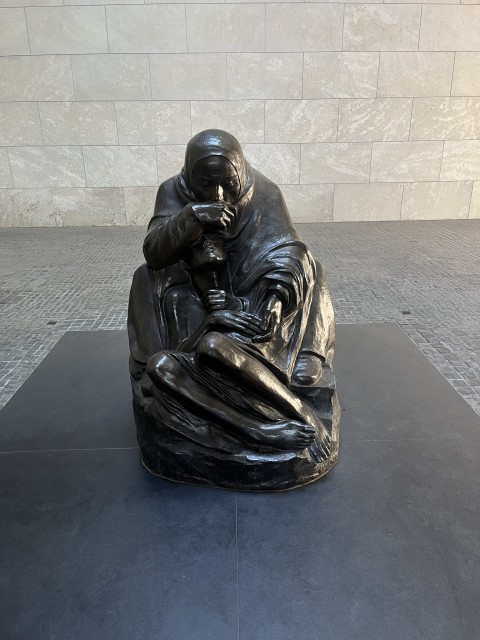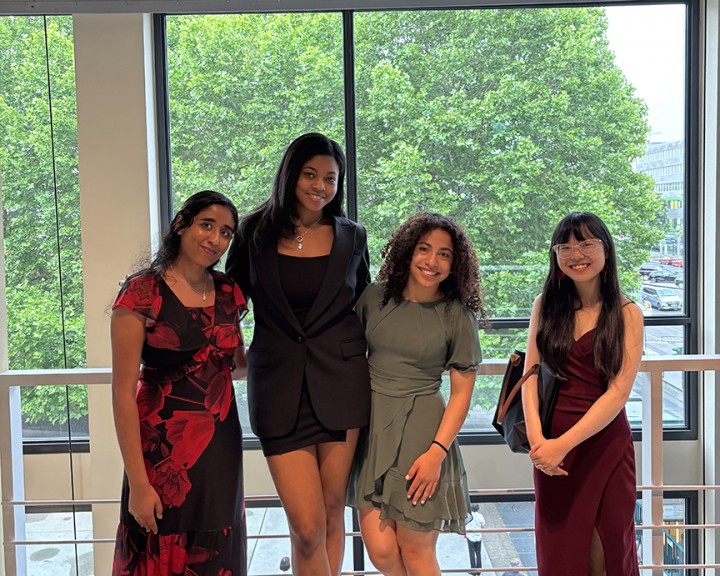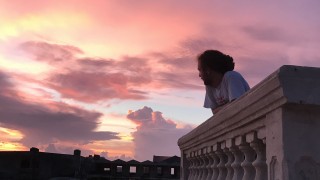"My experience in Berlin truly enhanced my understanding of art and music humanities, and challenged me to think more critically about the ways culture, history, and creativity intersect and shape the world we live in today."
This summer, the Global Learning Scholarship provided me with the opportunity to study Art and Music Humanities in Berlin, Germany. This scholarship afforded me the ability to immerse myself in Berlin’s creative energy while exploring how art and music intersect with history and politics. This trip combined my love of history with a newfound appreciation for music and art. The city’s art reflects its complex history, from the Berlin Wall’s murals to the use of music as a form of resistance, exemplified by the emergence of underground jazz clubs during Nazi Germany. Studying these works allowed me to explore how art reclaims power, fosters freedom, and challenges societal norms.

The highlight of my trip was a walking tour with my classmates. We explored hidden parts of the city as our guide described the historical significance of the Stepping Stones memorial, the statue of Friedrich Schiller outside the Konzerthaus, and “The Empty Library” in the plaza where the infamous book burning took place. The landmark that stood out to me most was Mother with Her Dead Son, a piece that memorialized the pain, suffering, and anguish of those who suffered under fascism throughout Germany’s history, most notably from, World War I, World War II, and the Cold War. The statue recognizes the shared suffering of all who endured cruelty and punishment within the confines of the country, yet symbolizes a move toward a brighter, more inclusive world. Experiencing these memorials in person gave me the ability to immerse myself in the memory of profound pain and reflect on its lasting impact. Conversely, the beautiful architecture and newly renovated educational institutions surrounding the memorials, such as the Humboldt University campus, represented a push toward a more educated future, one where the past would never be repeated.
Through this scholarship, I explored horizons I had only once imagined. Before arriving in Germany, I was a bit apprehensive because I felt as though it would be unlikely for Berlin to be as welcoming, lively, and racially diverse as New York City. However, when I landed one of the first things that struck me was the variety of cultures and communities in the city.

As I walked along Gneisenaustraße on the first day, I saw businesses and people from all over the world. Just one block felt like I had taken a trip around Europe, Asia, and Africa. This rich blend of cultures and peoples allowed me to enjoy delicacies from countries like Vietnam, Somalia, Nepal, India, and Turkey, with highlights including Mustafa’s Gemüse Kebap and, of course, Berlin’s beloved Berliner donuts from Sammy’s. I had free rein of the city and took advantage of its reliable public transportation system every chance I could. From attending festivals in Alexanderplatz with new friends to exploring the Berlin TV Tower and reflecting on the city’s deep cultural history, every moment was meaningful. Additionally, I was able to attend a branch of the church my grandmother attends in Ibadan, Nigeria. I found a warm, welcoming community with familiar faces and traditions while also immersing myself in new cultures on every corner of the city.
My experience in Berlin truly enhanced my understanding of art and music humanities, and challenged me to think more critically about the ways culture, history, and creativity intersect and shape the world we live in today. Thank you to the Global Learning Scholarship for giving me the chance to learn, explore, and grow in ways that will stay with me for a lifetime.

